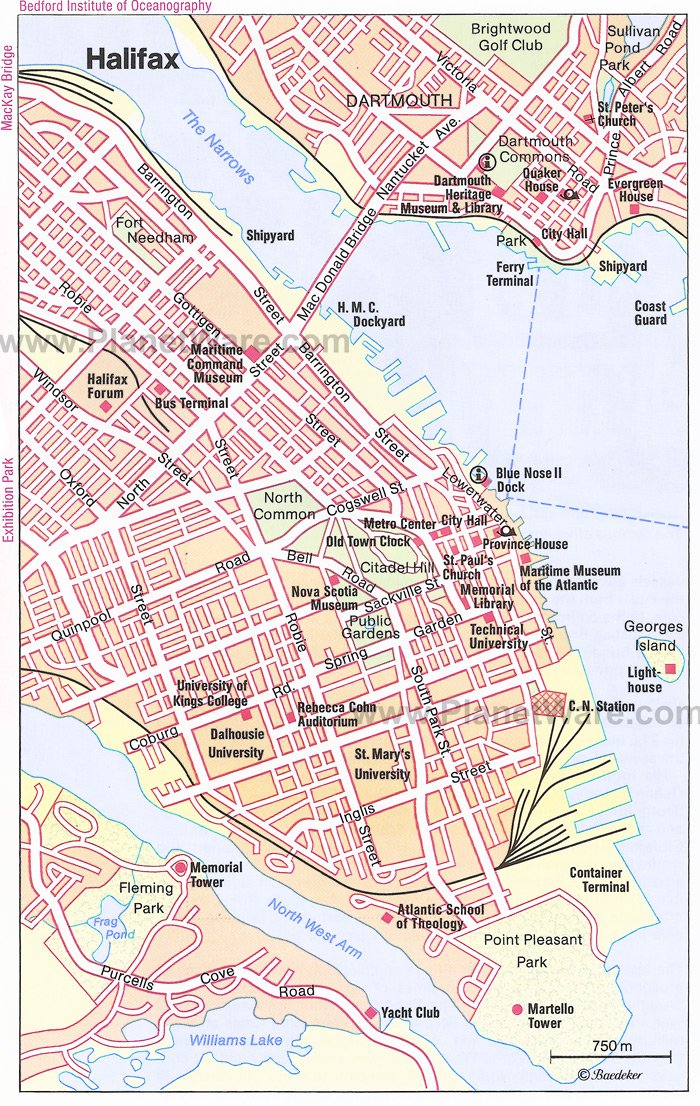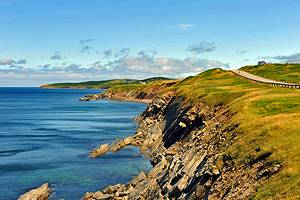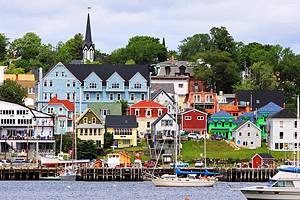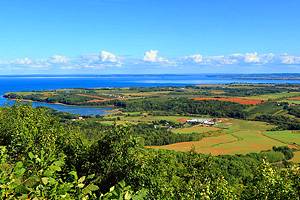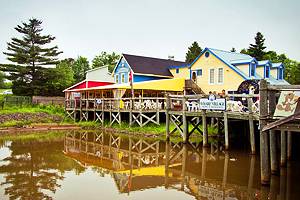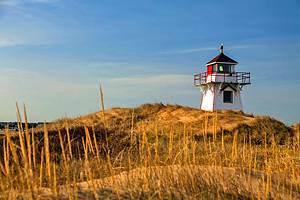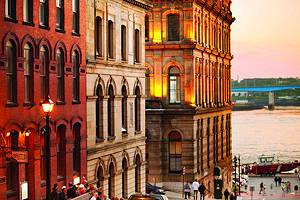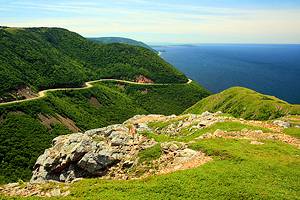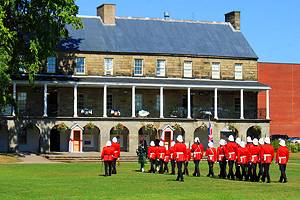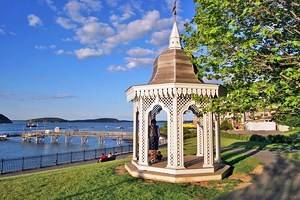Tourist Attractions in Halifax
Despite the skyscrapers of more recent times, Halifax is still dominated by a star-shaped, hilltop citadel. The city is not just the capital of Nova Scotia, it is also the commercial hub of Canada's Maritime provinces, as well as an important center for research, with no fewer than six universities and colleges.
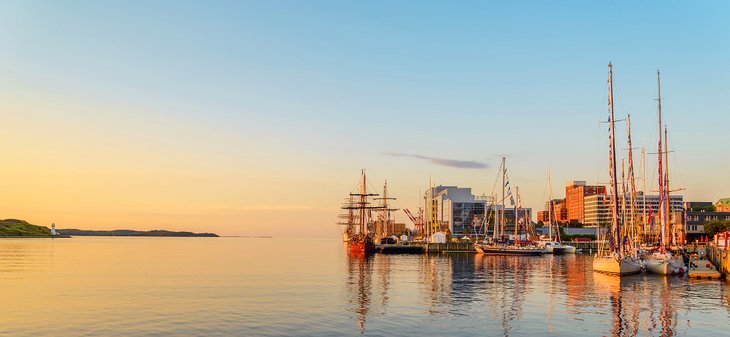
Its fine natural harbor cuts deeply into the Atlantic coastline, with docks, piers, parks, and industry along its entire length. The harbor and its seafaring history still shape life in the city, and you'll find many of the things to do in Halifax — from its rollicking entertainment scene, infused with maritime music, to its museums and tourist attractions — relate in some way to its close relationship with the sea.
During both world wars, Halifax was a collection point for convoys — a strategy for ships to cross the Atlantic in greater safety and protect themselves against attack from German U-boats. In 1917, the French munitions ship, "Mont-Blanc," which had arrived to join one such convoy, collided with the Belgian "Imo," causing the world's worst explosion prior to the dropping of the atom bomb on Hiroshima in 1945. The whole of the northern end of Halifax was razed to the ground, killing 1,400 people outright and injuring about 9,000. Windows were shattered as far away as Truro, some 100 kilometers away.
Halifax has more sea and shipping connections: as a major point of entry for immigrants arriving from Europe, and as the port closest to the Titanic disaster. You'll find reminders of both as you tour the city, but you'll find its lively present just as much fun to explore as its past. You can find the best places to visit with this list of the top tourist attractions and things to do in Halifax.
- Halifax Citadel National Historic Site
- Halifax Harbourfront
- Pier 21 National Historic Site
- Take a Day Trip to Peggy's Cove
- Maritime Museum of the Atlantic
- CSS Acadia and HMCS Sackville
- Stroll through Halifax Public Gardens
- Province House
- Take a Harbor Cruise
- Walk in Point Pleasant Park
- Art Gallery of Nova Scotia
- Take a Ferry to McNabs and Lawlor Island Provincial Park
- Map of Attractions & Things to Do in Halifax
Halifax Citadel National Historic Site
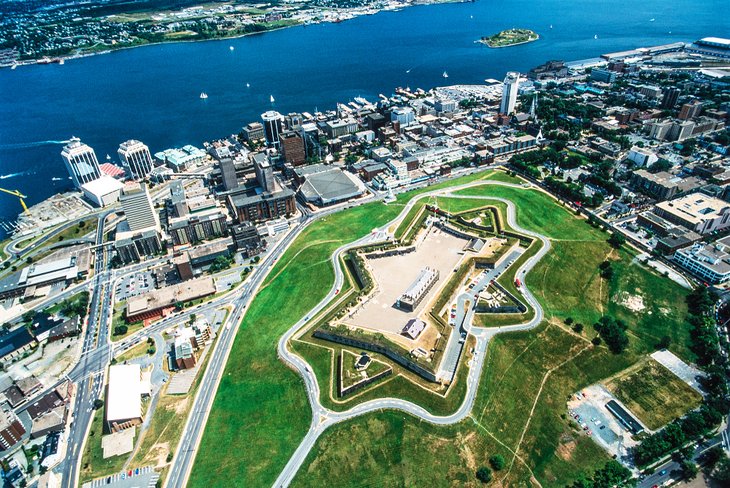
Standing above the city's downtown, Halifax Citadel National Historic Site encompasses the 1856 fortress. Although it never actually saw battle (and perhaps because of that), it is an excellent and intact example of a 19th-century British fort. In the summer, interpreters wear red British uniforms and interact with visitors to show what life was like here for the 78th Highlanders and the 3rd Brigade Royal Artillery and their families.
Kids love Citadel Adventures, where they can try using the drums, march in a drill, and spy on the enemy. After dark, tours relate some of the Citadel's several ghost legends.
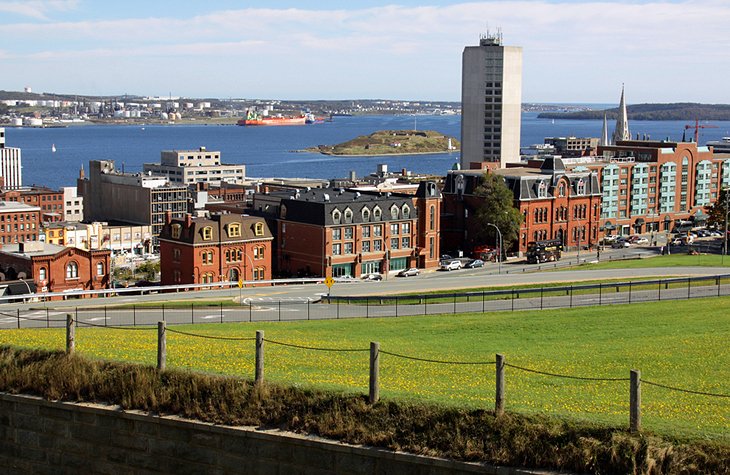
A road cuts up the hillside to the fortress, with stops for excellent views of the city, the harbor, Dartmouth, little Georges Island, and the Angus L. Macdonald Bridge. The Old Town Clock, which has become the symbol of Halifax, also sits on the hillside. Prince Edward originally commissioned it in 1803. It has four clockfaces and chimes and is an enduring memorial to the punctuality of a strict disciplinarian.
For the full experience, try to time your visit to coincide with the Changing of the 78th Highlander Sentinel guard ceremonies and the firing of the traditional noon gun.
Address: 5425 Sackville Street, Halifax
Halifax Harbourfront
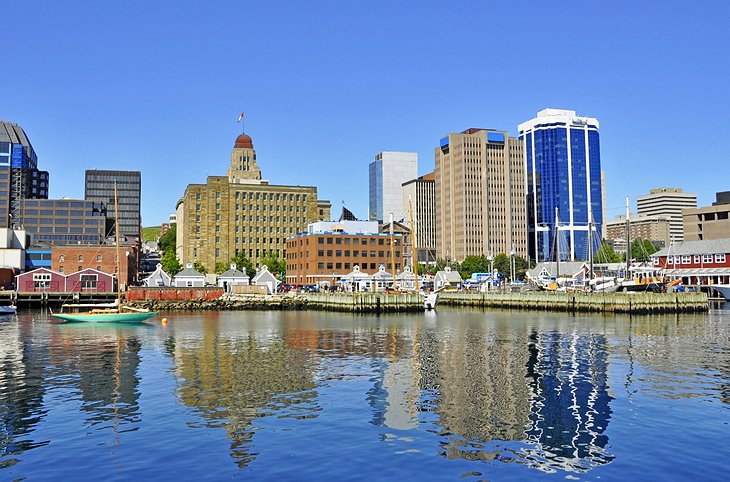
Much of the downtown waterfront in Halifax has a boardwalk along its length, where heritage vessels, small sailboats, tugs, and ferries come and go. The "Historic Properties" area has been refurbished as an attractive pedestrian precinct of 19th-century stone warehouses and old wharf buildings, now serving as bright shops, artists' studios, and restaurants with terraces overlooking the harbor.
The streets are closed to normal traffic. The square between two warehouses has been roofed over to make an equally attractive mall. During the day there are boats to tour, shops to browse, and restaurants serving fresh seafood; on a summer night, the harbor becomes a romantic place to stroll, with outdoor cafes and lively maritime music in the air.
Pier 21 National Historic Site
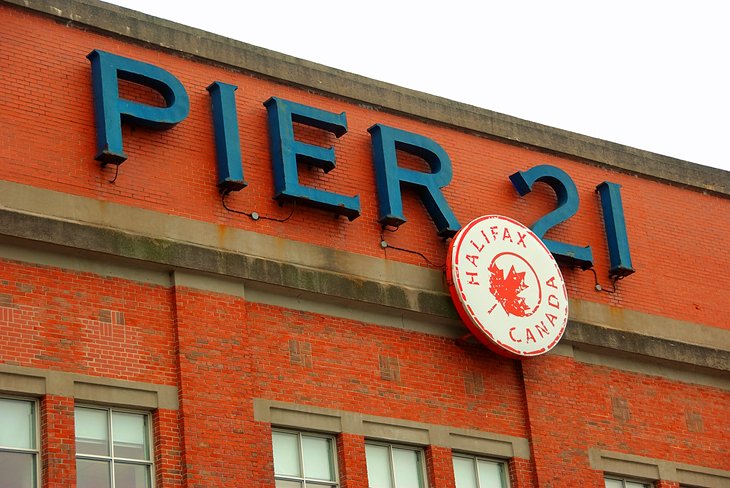
In the years from 1928 to 1971, when it served as the immigration shed, Pier 21 saw more than one million immigrants enter Canada. The interpretive center has exhibits that explore the immigration experience, from the homeland departure to being assimilated in a new country.
Interactive exhibits engage all ages in the personal stories of immigrants from all over the world, as they left their homes and arrived to make new lives in Canada. Children can dress in period clothes, imagine crossing the Atlantic inside a replica ship's cabin, and sit in a railcar that carried immigrants to new homes in the West. From the windows, there are good views out to the lighthouse on Georges Island.
Just a short walk away, the Halifax Seaport Farmers' Market is one of the city's most popular places to visit, loaded with local goodies. It's open daily, and there's a rooftop picnic area.
Address: 1055 Marginal Road, Halifax
Take a Day Trip to Peggy's Cove

Peggy's Cove is a delightful little bay on the rugged Atlantic coast, 43 kilometers southwest of Halifax. Colorful houses perch on the granite rocks along a narrow inlet, washed by crashing surf. Even on a calm sunny day, the waters here are dangerous, and subject to rogue waves. So pay attention to the signs, and stay off the wet rocks.
Above the village, Peggy's Cove Lighthouse completes the scenic ensemble, one of Nova Scotia's iconic landmarks and likely the most photographed lighthouse in Canada. Because of its popularity, you can expect to find the scene crowded with tourists; try visiting early in the day or late in the afternoon, when the inevitable tour buses have left.
Despite its fame as a must-see attraction, Peggy's Cove is an active little fishing village and a pleasant afternoon getaway.
Peggy's Cove achieved sad notoriety in September 1998, when a Swissair plane crashed into the sea killing 229 people. A memorial marks the event.
Maritime Museum of the Atlantic
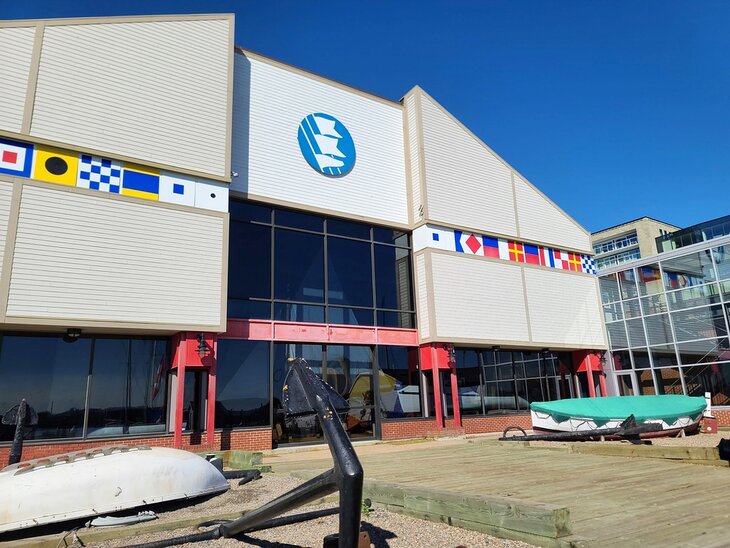
The Maritime Museum of the Atlantic has a view over Halifax harbor and brings the sea indoors with its collection of small craft, model ships, photographs, and curiosities of maritime history. One of its most popular exhibits concerns the Titanic disaster and Halifax's role as the port where the survivors were brought.
Exhibits are devoted to sea life and historic vessels, small craft boatbuilding, World War Convoys, the Days of Sail to the Age of Steam, plus historic events like the monumental Halifax Explosion in 1917 that devasted the city. The museum is not all static exhibits, with a number of hands-on activities, art programs, and performances.
Those especially interested in the Titanic should visit the Fairview Lawn Cemetery, where simple granite stones mark the resting places of those who died in the disaster. A larger monument marks the place of one victim, labeled Unknown Child, paid for by the sailors of the rescue vessel that recovered him from the sea. It wasn't until 1912 that the boy was finally identified.
Address: 1675 Lower Water Street, Halifax
CSS Acadia and HMCS Sackville

The Canadian Scientific Ship CSS Acadia, berthed at the Maritime Museum of the Atlantic, was built for the Canadian hydrographic service in 1913, the first vessel specifically designed to survey Canada's northern waters. But her career extended long beyond surveying ice-infested waters of Hudson Bay.
As a guard ship in Halifax Harbor, Acadia was damaged in the Halifax Explosion in 1917, and is the only vessel still afloat today to have survived the disaster. Acadia was recommissioned as a warship in 1939, serving as a patrol vessel and training ship through the war, and is the only surviving ship to have served the Royal Canadian Navy during both world wars.
Not part of the museum, but berthed just outside and appealing to anyone interested in ships or naval history is the HMCS Sackville, the last remaining Flower Class corvette in the world. Restored to her wartime configuration as a Canadian Naval Memorial, the Sackville is both a museum and memorial to those lost during the Battle of the Atlantic.
One of many convoy escort vessels built in Canada and the United Kingdom during World War II, this is Canada's oldest fighting warship. Halifax is a fitting location, as it was an important assembly point for the convoys.
Stroll through Halifax Public Gardens
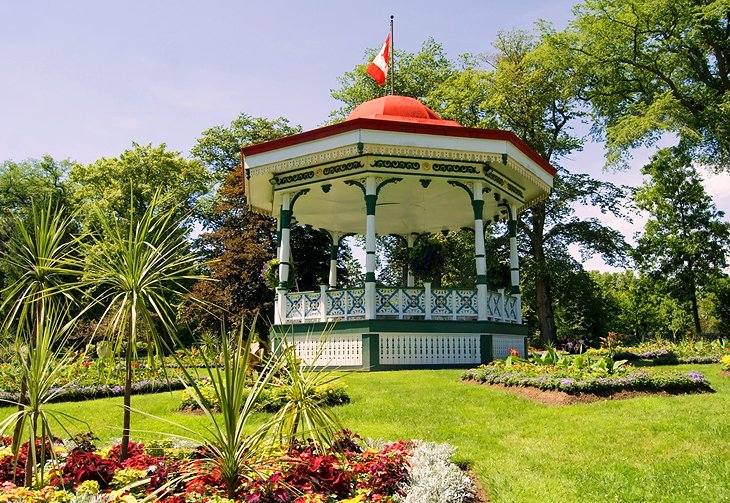
The Halifax Public Gardens sit in a seven-hectare park and opened to the public in 1867. The gardens are a good example of Victorian horticulture, with an ornamental bandstand, fountains, statues, and formal flower beds.
Ducks and other waterfowl make a home in the garden ponds. Weekly free tours explore the garden's history and its plants, and on Sunday afternoons from mid-June to mid-September, there are afternoon concerts at the bandstand. Heavy iron gates mark the entrance on Spring Garden Road.
Address: 5665 Spring Garden Road, Halifax
Province House

This Georgian sandstone building known as Province House, completed in 1819, is the seat of Nova Scotia's Parliament, in existence since 1758. The guided tour includes the "Red Chamber" where the Council used to meet, as well as the parliament chamber and the library that, with its two grand staircases, was once the Supreme Court of Nova Scotia.
This is where, in 1835, Joseph Howe defended himself against the charge of defamation. His acquittal is regarded as the beginning of a free press in Nova Scotia. He later went into politics and led the campaign against confederation, but ultimately joined the dominion government in Ottawa.
Address: 1726 Hollis Street, Halifax
Take a Harbor Cruise
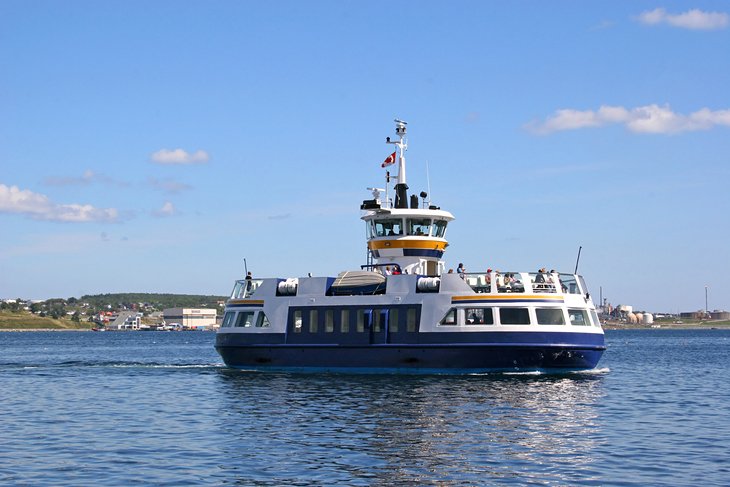
It would be a shame to visit Halifax and not see it as so many first laid eyes on it, approaching from the sea, with the Citadel's ramparts rising above the historic waterfront. There are several ways of enjoying this water view. You can take a harbor tour on the tugboat Theodore or cruise it under sail, which you can help hoist, aboard the 40-meter Tall Ship Silva.
The oldest saltwater ferry in North America, the Halifax-Dartmouth Ferry is also the second oldest in the world, after the Mersey Ferry in Liverpool, England. Once the only way to get between Halifax and the town of Dartmouth, at the other side of the harbor, it is still the fastest route.
While in Dartmouth, you can visit Quaker House, the only surviving home of the Quaker whalers, who settled in Dartmouth in 1785, and the Shearwater Museum of Aviation, filled with beautifully restored vintage aircraft, flight memorabilia, and a flight simulator where you can try out your piloting skills.
If you prefer to take a guided tour of the harbor, you can help hoist the sails and even take a turn at the helm on a Tall Ship Silva Sailing Cruise aboard a 130-foot schooner. Or just sit and enjoy the experience as you learn about the maritime history of Halifax as you sail past Harbour Bridge, Fort George, McNab's Island, and Point Pleasant Park.
For a unique way to see the sights, consider the Halifax Harbour Hopper Tour, which takes you around the top attractions on land and sea in an amphibious Vietnam War vehicle.
Walk in Point Pleasant Park

One of the most splendid places to stroll in Halifax is Point Pleasant Park, on the southernmost point of the city peninsula. This natural area features towering trees, winding footpaths, and great views out over Halifax Harbour and the North West Arm. It is closed to vehicles.
Within the park are many historical monuments and remnants of wartime. The Prince of Wales Tower is a round stone tower that was built by Prince Edward in 1796. It was the first of its kind in North America, the prototype "Martello Tower."
The basic idea was to combine soldiers' accommodation, a storehouse, and cannon mountings in a unit capable of defending itself, surrounded by immensely thick stone walls, with access only by a retractable ladder to the first floor.
Address: 5718 Point Pleasant Drive, Halifax
Art Gallery of Nova Scotia
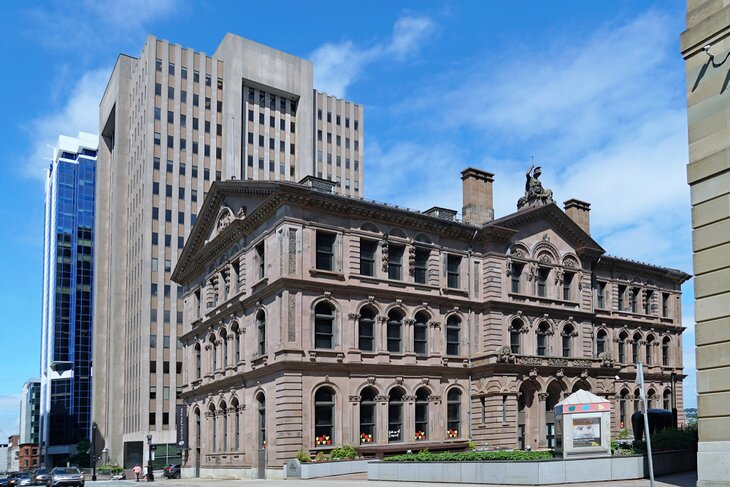
In downtown Halifax, the Art Gallery of Nova Scotia is the largest art museum in the Atlantic provinces. The museum features a permanent collection of visual arts from the Maritimes and around the world, numbering more than 13,000 pieces.
An entire exhibit centers on the work of Nova Scotian folk artist, Maud Lewis, and part of the gallery's collection includes her shed-sized house, which is decorated with vibrant paintings. The gallery also features excellent temporary exhibitions, which explore topics as diverse as artists' greeting cards or the work of the province's new voices in art.
Address: 1723 Hollis Street, Halifax
Take a Ferry to McNabs and Lawlor Island Provincial Park
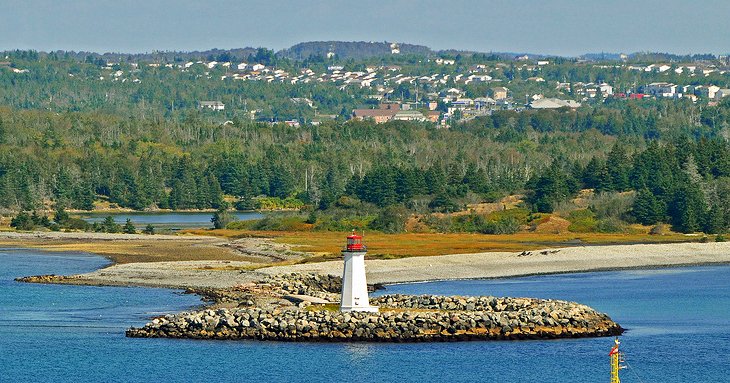
McNabs and Lawlor Island Provincial Park is located at the mouth of Halifax Harbour. Ferry boats take visitors to this natural area to enjoy bird watching, hiking, or a little history. While Lawlor Island is not open to the public, McNab Island features 400 acres of woodlands along with Fort McNab, a national historic site.
Other heritage buildings include summer homes, Maugers Beach Lighthouse, and a long-closed teahouse that is undergoing restoration to become the island's center for outdoor education and community activities.
Map of Attractions & Things to Do in Halifax
More Related Articles on PlanetWare.com
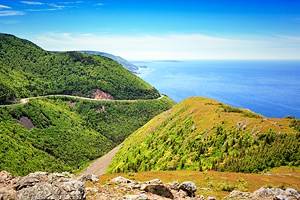
Where to Go from Halifax: Because of its location near the center of the province, it's easy to reach other highlights of Nova Scotia on day trips from Halifax. Along the south coast are the historic towns of Lunenburg and Mahone Bay, and to the north is the beautiful farming region of the Annapolis Valley, home of the Acadians.
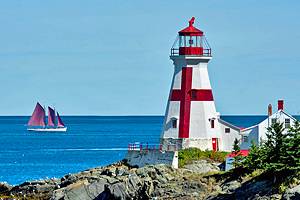
More Things to Do in Atlantic Canada: At the far eastern end of the province is Cape Breton Island, with the reconstructed French Fortress of Louisbourg and the spectacular Cape Breton National Park. Nova Scotia joins the other Maritime Provinces to make one of Canada's great itineraries. A short ferry ride from the north coast takes you to Prince Edward Island, and a ferry from Digby, on Nova Scotia's west coast, crosses the Bay of Fundy to New Brunswick.
